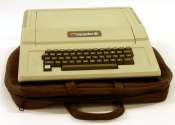ARM support lets smartphone users help find COVID-19 cure
Scientists, biochemists and health experts have been working feverishly to find a cure for COVID-19, one of the most severe pandemics of our lifetimes.
Computer Sciences

Scientists, biochemists and health experts have been working feverishly to find a cure for COVID-19, one of the most severe pandemics of our lifetimes.
Hardware

Following on the heels of last month's display of its next generation, high end Ampere A100 GPU, Nvidia this week unveiled a PCIe 4.0 version of the graphics unit.
Internet

A security firm handling employee fingerprint identification for companies worldwide has exposed more than 2 million bits of data, including 76,000 fingerprints, according to a cyberthreat research group.
Security

Data can be stolen from an air gapped personal computer just by using variations in screen brightness. Researchers at Ben-Gurion University wrote a paper on it.
Hi Tech & Innovation

Nervous about the self driving future? You are not alone. The AAA newsroom in March reported on the AAA's annual automated vehicle survey which found that 71 percent of people were afraid to ride in fully self-driving vehicles.
Internet

From a confidence trick originating in the late 19th century, to sophisticated AI that can manipulate reality, recreating anyone's face or voice with almost pinpoint accuracy—spam has come a long way.
Jul 25, 2019
1
28
Business

Apple Vision Pro is a mixed-reality headset—which the company hopes is a "revolutionary spatial computer that transforms how people work, collaborate, connect, relive memories, and enjoy entertainment"—that begins shipping ...
Jan 30, 2024
0
24
Consumer & Gadgets

Forty years after igniting a PC revolution, Apple's Mac is stronger than ever and could reach new glory due to AI computing—or be left behind.
Jan 22, 2024
0
12
Consumer & Gadgets

Forty years ago Steve Jobs revolutionized personal computing by launching the Apple Macintosh, the first PC with a user-friendly mouse and graphical interface that helped the machines enter the everyday lives of people for ...
Jan 22, 2024
0
5
Consumer & Gadgets

Technology innovation requires solving hard technical problems, right? Well, yes. And no. As the Apple Macintosh turns 40, what began as Apple prioritizing the squishy concept of "user experience" in its 1984 flagship product ...
Jan 21, 2024
0
1
A personal computer (PC) is any general-purpose computer whose size, capabilities, and original sales price make it useful for individuals, and which is intended to be operated directly by an end user, with no intervening computer operator.
A personal computer may be a desktop computer, a laptop computer or a tablet computer. The most common current operating systems for personal computers are Microsoft Windows, Mac OS X and Linux, while the most common microprocessors are x86-compatible CPUs, ARM architecture CPUs and PowerPC CPUs. Software applications for personal computers include word processing, spreadsheets, databases, Web browsers and e-mail clients, games, and myriad personal productivity and special-purpose software. Modern personal computers often have high-speed or dial-up connections to the Internet, allowing access to the World Wide Web and a wide range of other resources.
A PC may be used at home, or may be found in an office, often connected to a local area network (LAN). This is in contrast to the batch processing or time-sharing models which allowed large expensive systems to be used by many people, usually at the same time, or large data processing systems which required a full-time staff to operate efficiently.
While early PC owners usually had to write their own programs to do anything useful with the machines, today's users have access to a wide range of commercial and non-commercial software which is provided in ready-to-run form. Since the 1980s, Microsoft and Intel have been dominating much of the personal computer market with the Wintel platform.
This text uses material from Wikipedia, licensed under CC BY-SA